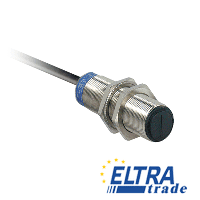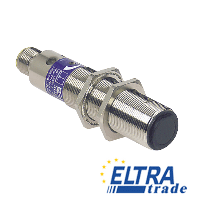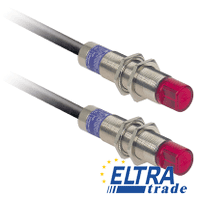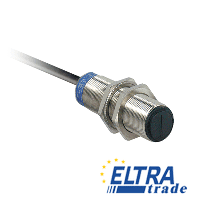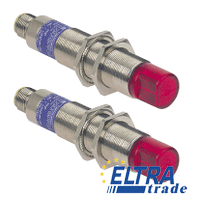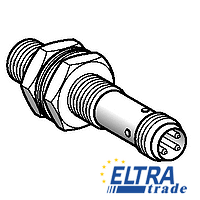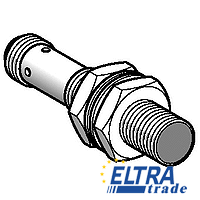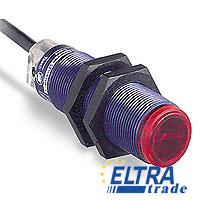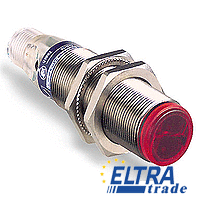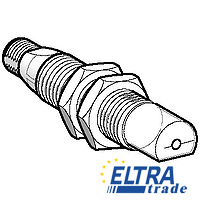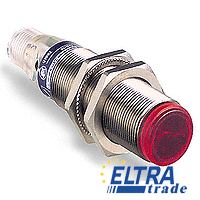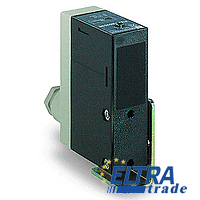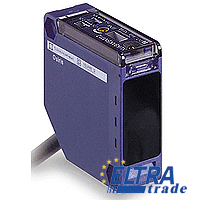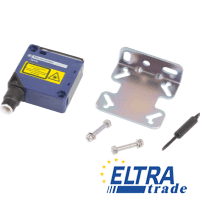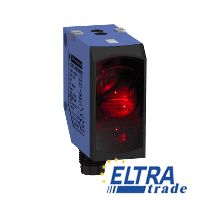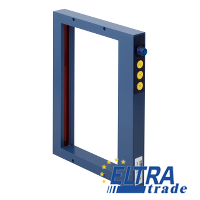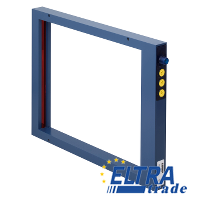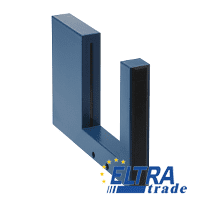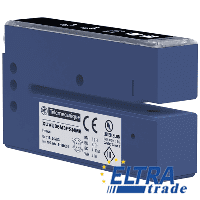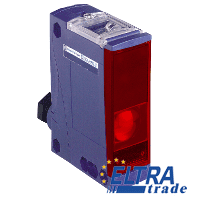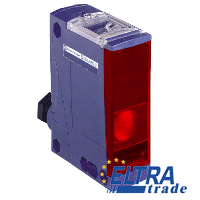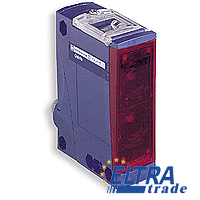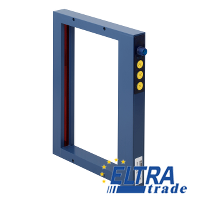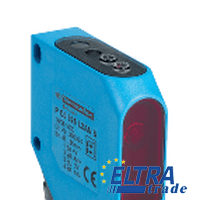| Electronic sensor type | Photo-electric sensor |
| Sensor name | XU2 |
| Sensor design | Cylindrical M18 |
| Detection system | Thru beam |
| Material | Metal |
| Electronic sensor type | Photo-electric sensor |
| Sensor name | XU2 |
| Sensor design | Cylindrical M18 |
| Detection system | Thru beam |
| Material | Metal |
| Electronic sensor type | Photo-electric sensor |
| Sensor name | XU2 |
| Sensor design | Cylindrical M18 |
| Detection system | Thru beam |
| Material | Metal |
| Electronic sensor type | Photo-electric sensor |
| Sensor name | XU2 |
| Sensor design | Cylindrical M18 |
| Detection system | Thru beam |
| Material | Metal |
| Electronic sensor type | Photo-electric sensor |
| Sensor name | XU2 |
| Sensor design | Cylindrical M18 |
| Detection system | Thru beam |
| Material | Metal |
| Electronic sensor type | Photo-electric sensor transmitter |
| Sensor name | XUA |
| Sensor design | Cylindrical M8 |
| Detection system | Thru beam |
| Material | Metal |
| Electronic sensor type | Photo-electric sensor |
| Sensor name | XUA |
| Sensor design | Cylindrical M8 |
| Detection system | Diffuse |
| Material | Metal |
| Electronic sensor type | Photo-electric sensor |
| Sensor name | XUB |
| Sensor design | Cylindrical M18 |
| Detection system | Multimode |
| Material | Plastic |
| Electronic sensor type | Photo-electric sensor |
| Sensor name | XUB |
| Sensor design | Cylindrical M18 |
| Detection system | Multimode |
| Material | Metal |
| Electronic sensor type | Photo-electric sensor |
| Sensor name | XUB |
| Sensor design | Cylindrical M18 |
| Detection system | Multimode |
| Material | Metal |
| Electronic sensor type | Photo-electric sensor |
| Sensor name | XUB |
| Sensor design | Cylindrical M18 |
| Detection system | Multimode |
| Material | Metal |
| Electronic sensor type | Photo-electric sensor |
| Sensor name | XUJ |
| Sensor design | Compact |
| Detection system | Diffuse |
| Material | Plastic |
| Electronic sensor type | Photo-electric sensor |
| Sensor name | XUK |
| Sensor design | Compact 50 x 50 |
| Detection system | Diffuse with background suppression |
| Material | Plastic |
| Electronic sensor type | Photo-electric sensor |
| Sensor name | XUK |
| Sensor design | Compact 50 x 50 |
| Detection system | Diffuse with background suppression |
| Material | Plastic |
| Electronic sensor type | Photo-electric sensor |
| Sensor name | XUK |
| Sensor design | Compact 50 x 50 |
| Detection system | Diffuse distance sensor |
| Material | Plastic |
| Electronic sensor type | Photo-electric sensor |
| Sensor name | XUK |
| Sensor design | Compact 50 x 50 |
| Detection system | Polarised reflex |
| Material | Plastic |
| Electronic sensor type | Photo-electric sensor |
| Sensor name | XUV |
| Sensor design | Frame |
| Detection system | Thru beam |
| Emission | Infrared |
| Electronic sensor type | Photo-electric sensor |
| Sensor name | XUV |
| Sensor design | Frame |
| Detection system | Thru beam |
| Emission | Infrared |
| Electronic sensor type | Photo-electric sensor |
| Sensor name | XUV |
| Sensor design | Frame |
| Detection system | Thru beam |
| Emission | Infrared |
| Electronic sensor type | Photo-electric sensor |
| Sensor name | XUV |
| Sensor design | Fork |
| Detection system | Thru beam |
| Emission | Ultrasonic |
| Electronic sensor type | Photo-electric sensor transmitter |
| Sensor name | XUX |
| Sensor design | Compact 92 x 71 |
| Detection system | Thru beam |
| Material | Plastic |
| Electronic sensor type | Photo-electric sensor transmitter |
| Sensor name | XUX |
| Sensor design | Compact 92 x 71 |
| Detection system | Thru beam |
| Material | Plastic |
| Electronic sensor type | Photo-electric sensor transmitter |
| Sensor name | XUX |
| Sensor design | Compact 92 x 71 |
| Detection system | Thru beam |
| Material | Plastic |
| Electronic sensor type | Photo-electric sensor |
| Sensor name | XUX |
| Sensor design | Compact 92 x 71 |
| Detection system | Diffuse with background suppression |
| Material | Plastic |
| Electronic sensor type | Photo-electric sensor |
| Sensor name | XUY |
| Sensor design | Frame |
| Detection system | Thru beam |
| Emission | Infrared |
| Electronic sensor type | Photo-electric sensor |
| Sensor name | XUY |
| Sensor design | Compact 50 x 50 |
| Detection system | Diffuse |
| Material | Plastic |
- circuit voltage 24...48 V DC
- rated operational voltage 250 V AC 50/60 Hz
- net weight: 0.22 kg
- Cylindrical M18
- Stainless steel
- 1 N.O. or 1 N.C. programmer
- 25 m
Schneider Electric OsiSense XU is a range of photoelectric sensors designed for object detection in industrial automation. These sensors use different sensor technologies and the product line offers different models with specific features and capabilities. Let's talk more about the Schneider Electric OsiSense XU.
Overview of Schneider Electric OsiSense XU
Let's try to find out more about Schneider Electric's OsiSence XU sensor line.
Sensor types
The OsiSense XU range includes various types of photoelectric sensors to meet different application requirements.
- Beam crossing sensors. These sensors consist of a transmitter and receiver located opposite each other. They detect an object when it interrupts the light beam between them.
- Reflective sensors. These devices have a built-in transmitter and receiver in one housing. They detect an object when it reflects emitted light back to the receiver.
- Diffuse sensors. These devices have a combined transmitter and receiver in one housing. They detect an object by measuring the light reflected from the object's surface.
Sensitivity range
OsiSense XU photoelectric sensors have specific sensitivity ranges that determine the maximum distance at which they can detect objects. The sensitivity range may vary depending on the specific model and type of sensor.
Output types
OsiSense XU sensors offer various types of outputs for interfacing with control systems or PLCs. General output options include.
- Transistor outputs NPN (normally open/normally closed) or PNP (normally open/normally closed).
- Analog outputs for continuous output signals are proportional to the distance or intensity of the detected object.
- Digital outputs such as NPN, PNP, or relay outputs for object detection indication.
Connection options
OsiSense XU sensors typically provide connection options that are compatible with industry-standard connection methods. This includes pre-wired cables or connectors making it easy to integrate sensors into existing systems.
OsiSense XU photoelectric sensors are widely used in industrial automation, manufacturing, packaging, and material handling. They provide reliable and accurate object detection, presence detection, and positioning capabilities. Specific features, specifications, and application recommendations for each OsiSense XU sensor can be found in the product documentation provided by Schneider Electric.
Working Principle of OsiSense XU
Schneider Electric's OsiSense XU photoelectric sensors work on the principle of detecting changes in light intensity caused by the presence or absence of an object. The principle of operation varies depending on the type of sensor, which includes cross-beam, reflective, and diffuse sensors. Let's look at an explanation of the principles of operation for each type of sensor.
Through-beam sensors
Through-beam sensors consist of a separate transmitter and receiver. The transmitter emits a focused beam of light, and the receiver captures the light beam. When an object passes between the transmitter and receiver, it interrupts the light beam, causing a change in light intensity. This change is detected by the receiver, indicating the presence of the object.
Reflective sensors
Reflector sensors combine the transmitter and receiver in one housing. The transmitter emits a beam of light, which is then reflected back to the receiver when it encounters an object. The receiver picks up the reflected light and a change in light intensity is observed. This change indicates the presence of the object.
Diffuse sensors
Diffuse sensors also have a combined transmitter and receiver in the same housing. The transmitter emits a light beam that illuminates the surrounding area. When an object enters the detection zone, it reflects some of the light back to the receiver. The receiver picks up the reflected light and a change in light intensity is observed. This change indicates the presence of the object.
In all three types of sensors, an output signal is generated based on the detected change in light intensity. This output may be a digital signal (eg, NPN or PNP) indicating the detection of an object, or an analog signal representing the distance or intensity of the detected object.
Applications of OsiSense XU
Schneider Electric OsiSense XU photoelectric sensors are widely used in industrial automation and control systems. Here are some common applications that use OsiSense XU sensors.
- Object detection and presence sensing.
- Conveyor systems.
- Packaging and labeling.
- Material handling.
- Assembly lines.
- Robotics and automated guided vehicles.
- Automotive industry.
- Food and beverage processing.
These are just a few examples of applications for Schneider Electric OsiSense XU sensors. The versatility and reliability of these devices make them suitable for a wide range of industries and automation tasks requiring accurate object detection.
